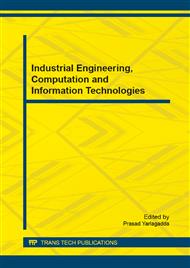p.3
p.8
p.13
p.18
p.24
p.30
p.36
p.40
A Quick Reduction Algorithm Based on Important Index
Abstract:
This paper tries to find a more feasible method to achieve core and reduction. Against concepts "distinguishable relation of attribute set" and "distinguishable unit set of attribute set", it defines a concept "important index", and proposes an effective and quick approach for important index. After drawn out the involved theory and equivalent proposition, also presents algorithms for core and reduction upon the important index. The heuristic reduction algorithm adopts the bottom-up design, and gets reduction based on the heuristic information "important index of attribute set". The complexity of the algorithm in space is O(m), and the complexity in time is O(mn2). The theoretical analysis and results show that the ways proposed here simplify the relevant operations and are suitable to deal with the huge volume of data.
Info:
Periodical:
Pages:
13-17
Citation:
Online since:
December 2014
Authors:
Keywords:
Price:
Сopyright:
© 2015 Trans Tech Publications Ltd. All Rights Reserved
Share:
Citation:


